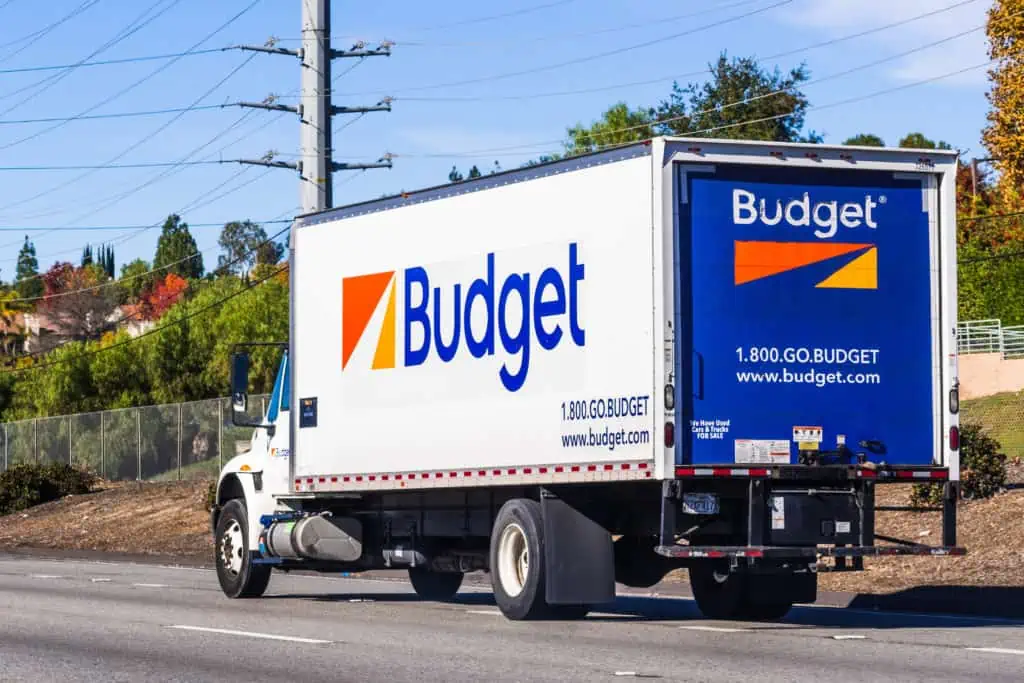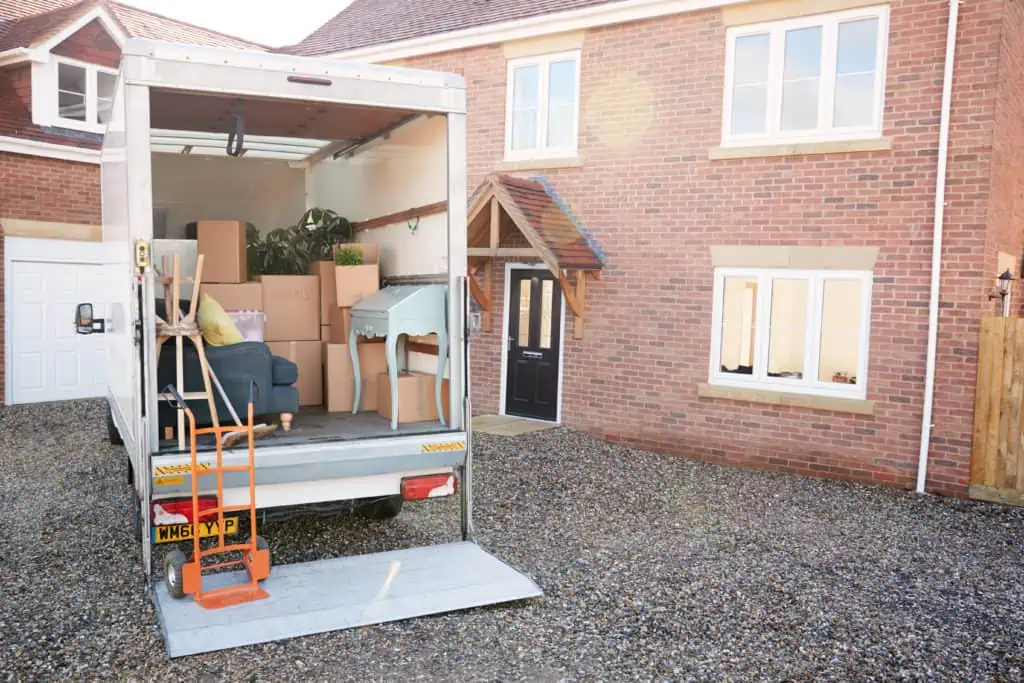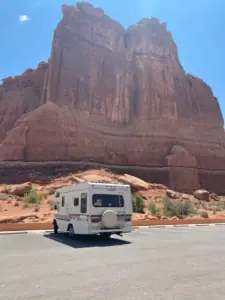It’s no secret that gas prices have risen faster than a helium balloon on the moon.
In June of this year, the U.S. Energy Information Administration (EIA) stated that the price of regular gasoline reached a nationwide average of $4.93 per gallon.
At the moment, the high-cost trend is on the decline, but prices are still a high-octane headache. This means for those of us who are moving this year… yup, high costs are going to hit us there too.
To put it in perspective, a move from Washington, D.C. to Portland, Oregon covers about 2,800 miles. In 2021, driving a loaded U-Haul that distance while getting 10mpg would have run about $850 in gasoline costs. The fuel cost in 2022 for that same trip is a stunning $1,300! In fact, a recent study by HireAHelper found that 2022 is the most expensive year on record for moving. Yikes.
What do high gas prices in 2022 mean for my move with a U-Haul, Penske, or Budget truck?
Airlines, full-service moving companies and portable storage container companies all tack on a fuel surcharge to your final bill that reflects the current price of gas.
This could mean anywhere from a couple hundred to a thousand bucks added to the final cost of your move!
See prices for movers by the hour – instantly.
Read real customer reviews.
Easily book your help online.
(If you are hiring a company that does the work for you to haul your stuff to your new home, make sure you get a clear explanation of what their total fuel surcharge will be.)
But what about renting a truck yourself? To start saving money there, it’s first important to understand how gas costs and fuel policies for rental trucks work.
U-Haul
When you rent a U-Haul, they let you opt to fill up the truck yourself along the way, and so long as the fuel gauge reads the same as when you picked it up, you’ll avoid further fees. (In other words, you have to pay for all the gas you use.)
“To get better mileage, it’s best to keep the heavy core of your load in the middle of the truck, which is up closer to the cab.”
Or, you can use EZ-FUEL, which is a U-Haul service that lets you leave the refueling up to U-Haul at a price agreed upon in the rental contract. We don’t recommend this, as their prices are typically considerably more expensive than fueling up on your own. And if you return the truck with less than 1/4th of a tank, you immediately get charged a $30 fee.
Penske
Penske states that there are “no charges due,” so long as you return the truck in proper condition and at the same fuel level as when you picked it up. This is basically the same as U-Haul’s policy, minus the “convenience” of them adding the gas you used at a huge price. (Here are Penske’s truck return policies.)
Budget
Budget has a similar fuel policy to the other two companies. It requires you to return your truck with the same level of fuel as when you departed, at a minimum. If you don’t, you’ll not only be charged for however much it costs to refill the tank, but also another fueling fee on top of that.
Before you ask, there is no standardized credit, rebate, or discount given at any of these companies for unused fuel. (I’ve had U-Haul employees offer a small credit for some extra gas left in the tank, but not as often as they haven’t.) A little unfair, but that’s the common policy. It’s best to plan your trip well and do whatever you can to not waste gas on your way.
How can I lower rental truck fuel costs?
There may not be much we can do about the price of gas itself, but there are a surprising amount of ways we can lessen our gas consumption.
“Airlines, full-service moving companies and portable storage container companies all tack on a fuel surcharge to your final bill that reflects the current price of gas.”
This ultimately means the most impactful thing for lowering your U-Haul bill is fuel efficiency; you want to use the absolute minimum it takes to get you to your destination. If you’re planning on renting a truck and want to make your refueling experience less painful, here are some proven tactics you can use.
1. Lightening your load will save you a lot
The less you have, the less the truck weighs, and the less it burns fuel. It’s that simple. This means selling off unneeded furniture or taking as much as humanly possible in another vehicle will make you more money than you realize. There are lots of ways to get rid of stuff before a move — here’s a primer on paring down to get you started.
2. Fix your travel route
Taking the “longcut” because you haven’t checked for shortcuts costs you both time and money. Rush hour traffic is another big time and money waster, so make sure to avoid it when you leave your hometown and in any other towns along the way to your new place.
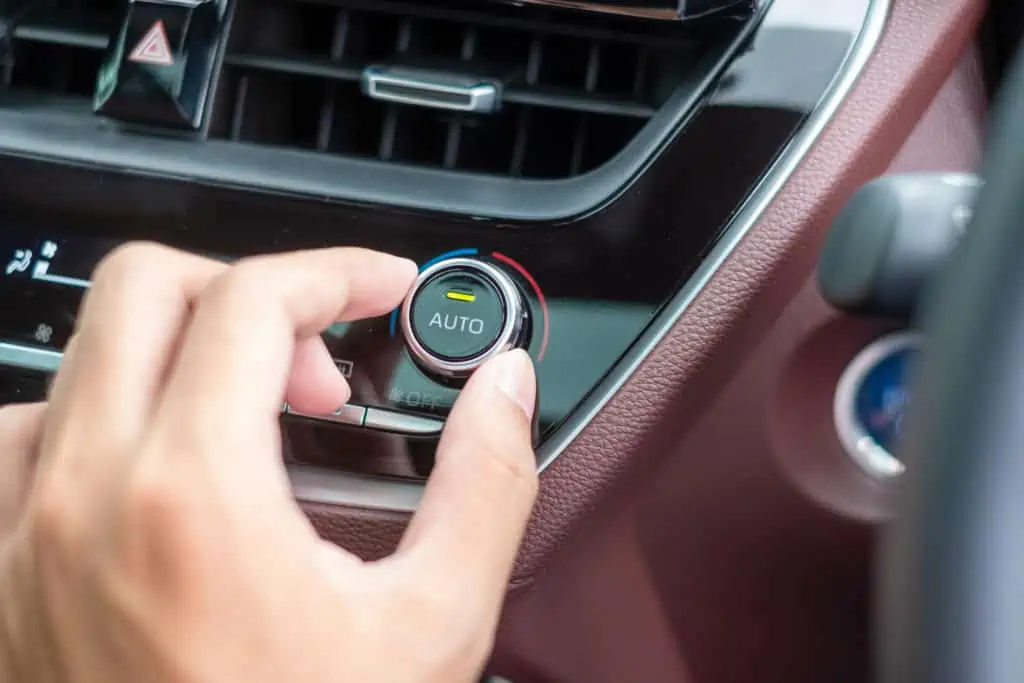
The U.S. Department of Energy (USDoE) advises skipping the air conditioning and rolling down your windows. Turning on the A/C decreases fuel efficiency the more you crank it up.
Especially when you’re driving through a town, it’s best to keep the A/C off. However, keep in mind open windows on the highway can create drag that’s as bad for fuel efficiency as the air conditioner.
Protip: simply wrap a wet towel around your neck. As a professional mover, I know from experience this will keep you both cool and plenty awake!
4. Slow down, lead foot
The USDoE also advises driving conservatively. Gunning it to beat the light or to pass someone (often bad ideas regardless) eats up gas faster than a jet ski. According to government numbers, an unnecessarily heavy foot — especially in city traffic — can decrease your vehicle’s gas mileage by as much as forty percent!
5. Avoid filling up at highway rest areas
Anyone who drives the highways knows that gas is more expensive at the super-convenient rest stop pumps, sometimes by a quarter a gallon or more.
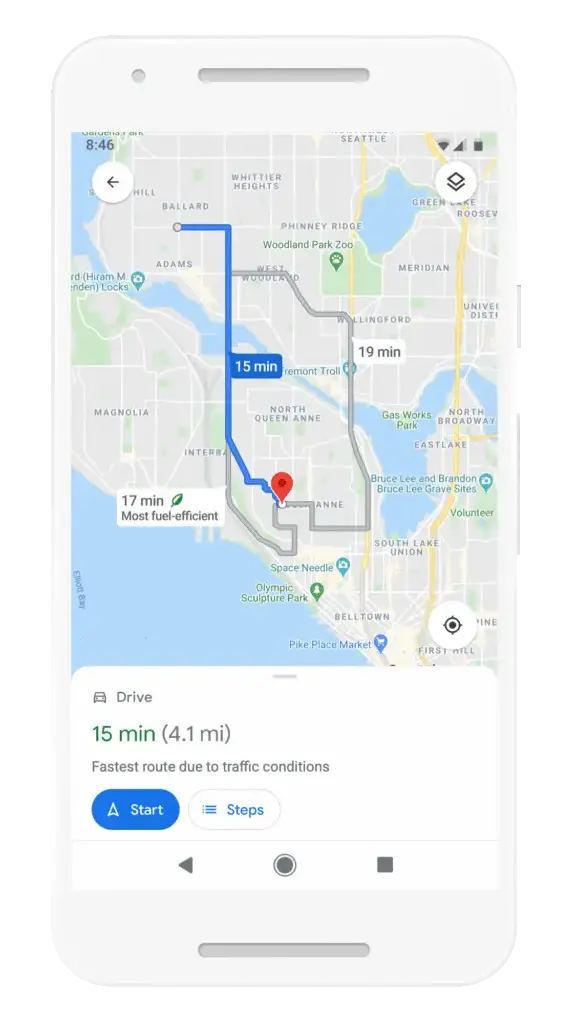
That will definitely add up. Beat that racket by keeping an eye open for the small blue signs near highway exits showing what gas stations there are, which way they are, and even how far away they are.
Simply put, Google Maps is an invaluable tool for figuring this out. Not only does it show you all the gas stations in an area or along a certain route, but it will also tell you their gas prices in real-time. All you need to do is tap the gas icon under the search bar, and all nearby stations will pop up.
The app can also let you know if the route you’re taking is the most eco-friendly and fuel-efficient. Look for the leaf icon when planning your trip — even if it’s a little longer, it will save you money in the long run.
6. Ask for the newest vehicle on the lot
The newer the model on the lot, the better your final gas price will be. It’s that simple.
Penske has a reputation for having newer, better-maintained trucks than the other guys. And while Penske can be noticeably pricier for short moves, over longer hauls they are price-competitive. Add the bonus of a more reliable and more fuel-efficient vehicle in my opinion, and you may come out ahead when gasoline is your main obstacle.
7. Balance your load
It’s not just what your stuff weighs that affects your truck’s gas mileage, but how your stuff is loaded that can make a big difference, both in safety and fuel efficiency. A balanced load is a stable load, meaning your truck doesn’t have to fight against excess momentum and gravity on its insides.
To get better mileage, it’s best to keep the heavy core of your load in the middle of the truck, which is up closer to the cab. (If you’re not sure you’d be any good at playing furniture Tetris, professional hourly movers have this process down to an art.)
The cost of a gallon of gas may be out of our control, but wet towels, light feet, and balanced loads? You bet you can handle that. There are plays we can make to save gas and, in turn, some of our hard-earned cash.




